Exploring the Caribbean Coast of Mexico

Twelve years ago, we bundled our young children into our Land Rover Defender and set off to explore the planet. Now, the children are both young adults, and we have finally come to the stage in our life which we have been anticipating since the very beginning – our wonderful kids are leaving the roving nest to start their own adventures in life. To celebrate, Luisa and I jumped in the Nimbl after a sad goodbye and made a beeline for the wild Caribbean coast of Quintana Roo, the Mexican state best known for the tourist hotspots of Cancun and Tulum.
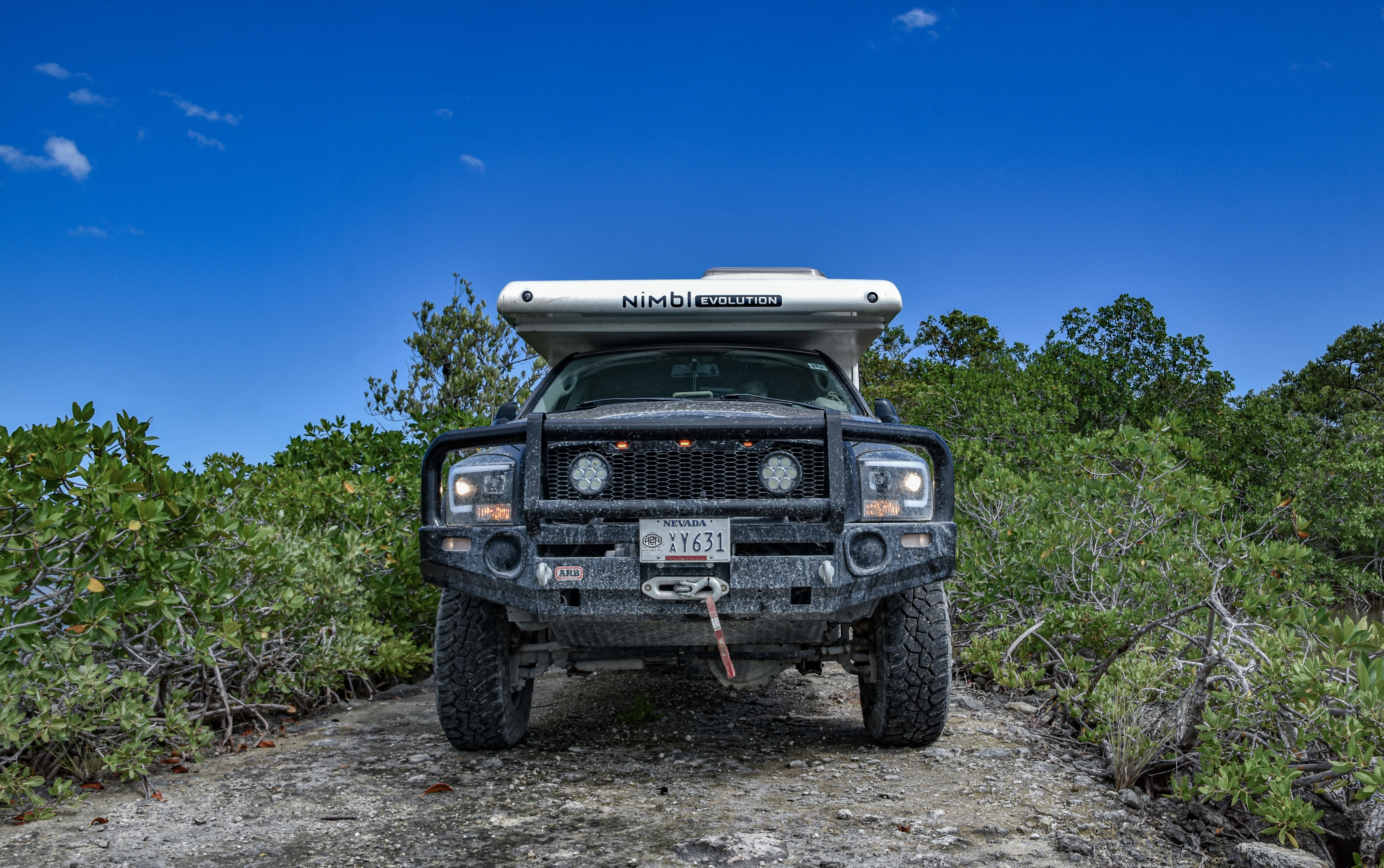
We have no interest in tourist hotspots unless we are looking for a well-stocked and overpriced supermarket or if the destination is home to some natural wonder that we simply cannot bypass. Instead, we head far from the beaten track; this is why we travel overland in vehicles that offer us self-sufficiency and capability. After leaving the children in a small rented house in Merida, the first stop was a cenote where we swam alone and grilled dinner to the soundtrack of howler monkeys and, later, falling rain.
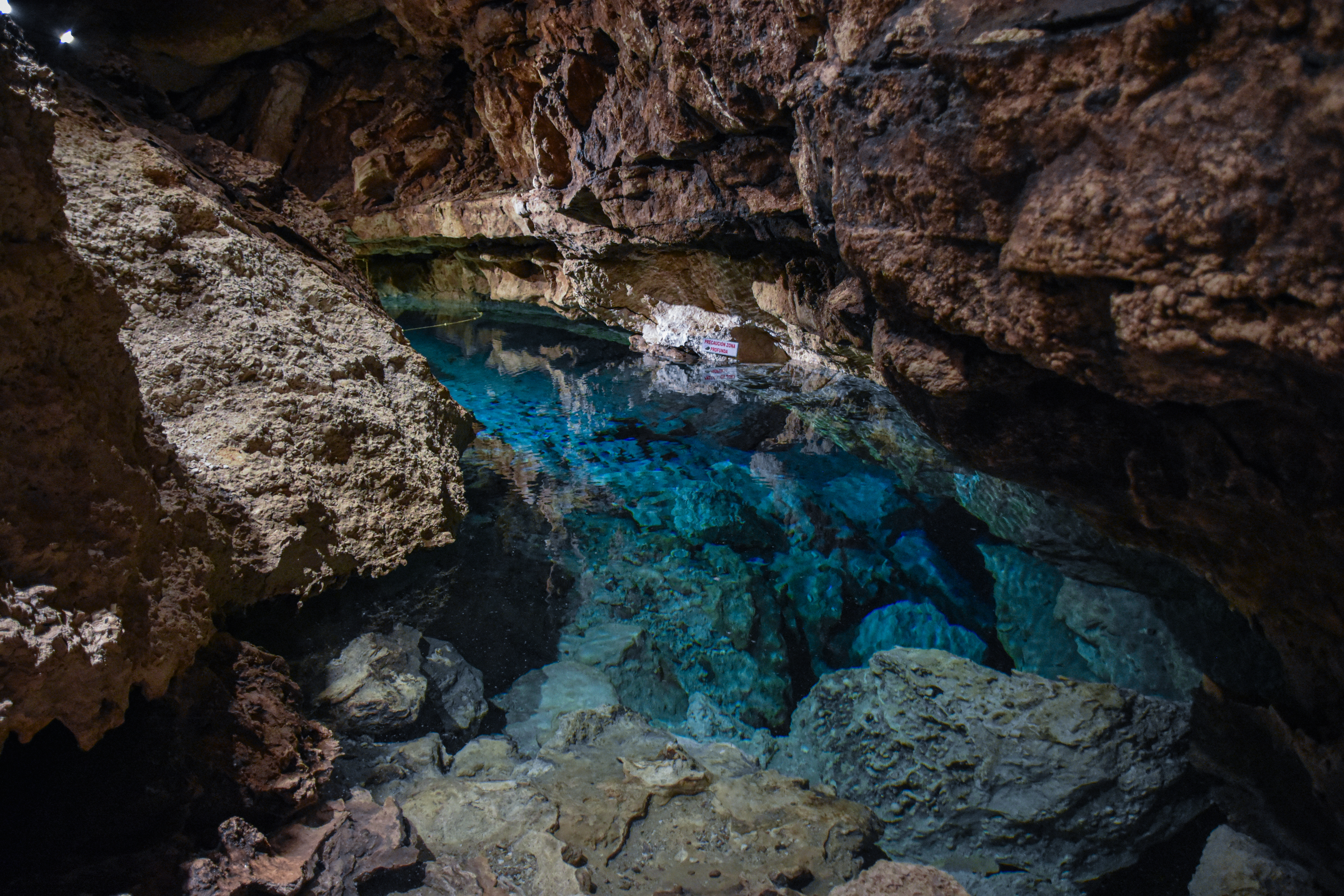
According to Wikipedia, "A cenote is a natural pit, or sinkhole, resulting from the collapse of limestone bedrock that exposes groundwater. The regional term is specifically associated with the Yucatán Peninsula of Mexico, where cenotes were commonly used for water supplies by the ancient Maya and occasionally for sacrificial offerings".
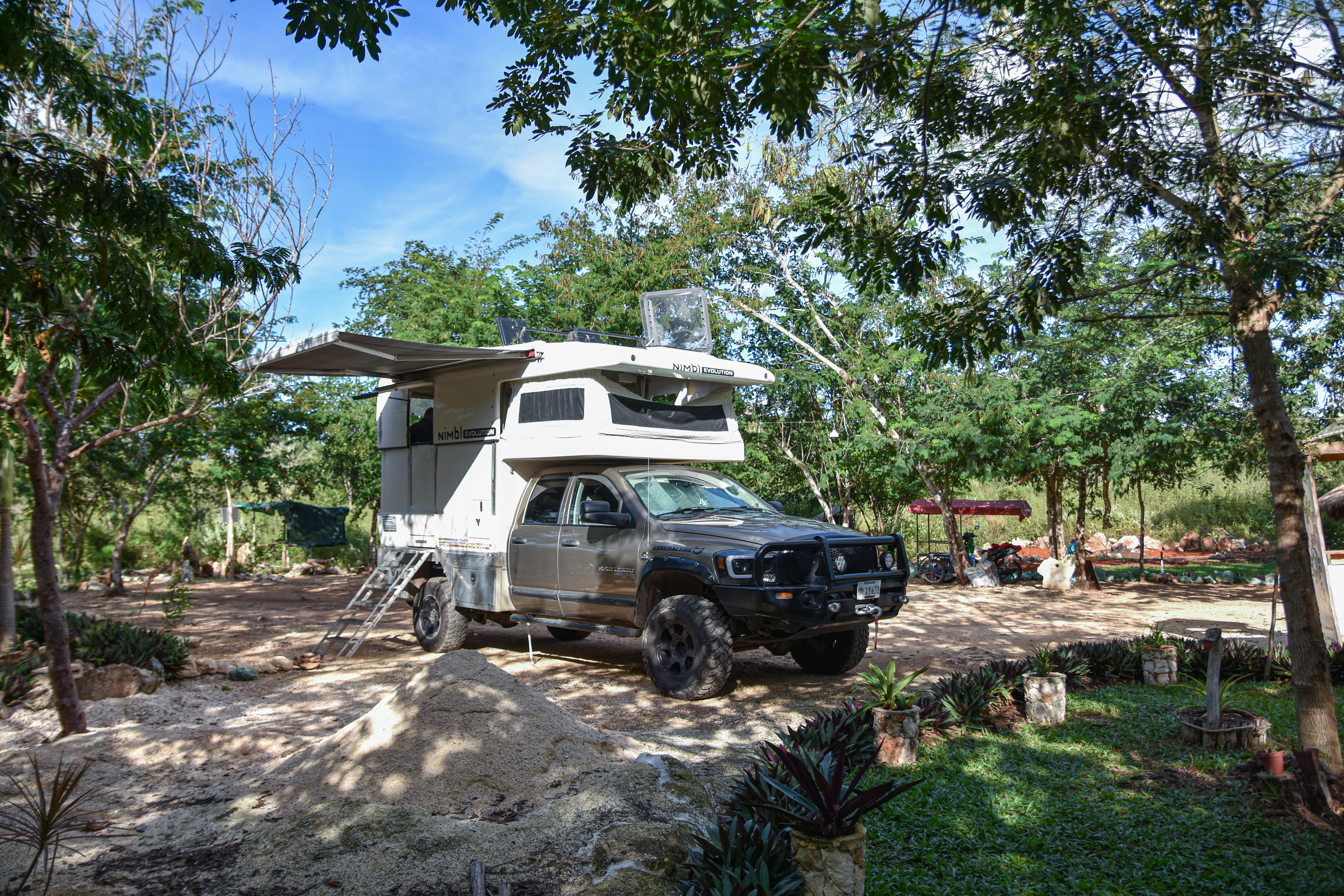
The cenotes we explored over the next two days were bizarre, as if from another planet, and both contained the crystal clear fresh water for which the regional cenotes are famous. Swimming alone in an underground swimming pool is spooky, spectacular, and refreshing.
A long drive on a short jungle road led us to a superb three-course roadside lunch which cost the grand sum of $17 for two people. With full bellies, we pointed the Nimbl through the jungle towards Tulum, where throngs of tanned tourists bustled about doing touristy things. To reach the Sian Ka'an Biosphere Reserve and the track to Punta Allen, we had to first weave through the hotel district, where taxis, delivery trucks, and tourist scooters compete on a narrow sliver of road shadowed by competitive hotels. Something strange happened; people pointed at us occasionally, we rounded a corner, and a beautiful young woman waved as if she knew us. Later, while parked to pay to enter the reserve, a Swiss gentleman approached and asked if I was the traveler who writes for Expedition Portal!
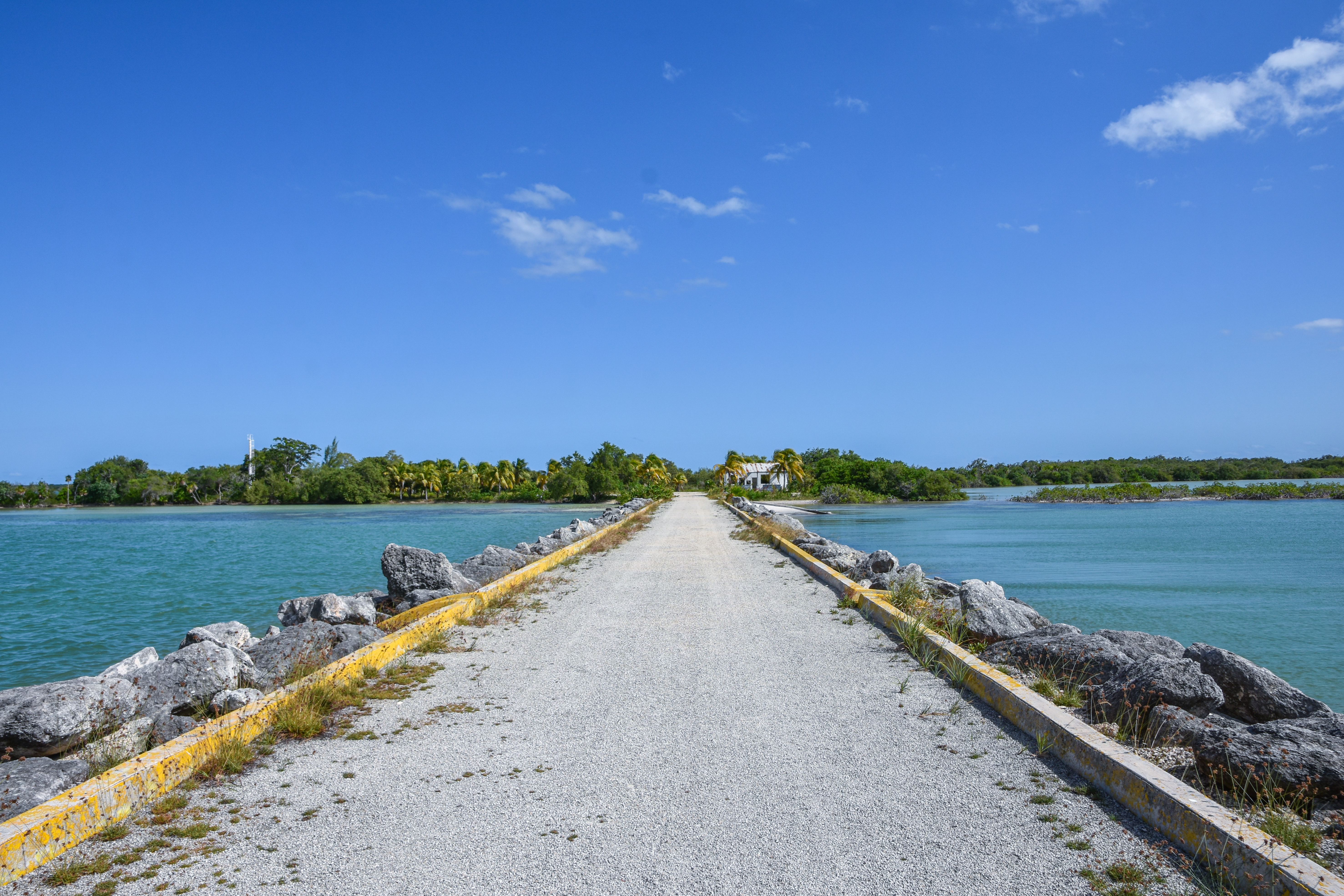
With the fee paid, we drove through the large gate and soon left the madness of the hotel district and entered a zone of beach clubs which eventually gave way to small private properties. After the gate, the road deteriorated suddenly, always a good sign, and we sloshed through endless puddles, creamy white mud spraying over the X3s and even as high as the hood. Exploring in the wet season presents challenges, and it is for this reason that we always equip our vehicles with the excellent X3 mud terrain tire when heading to the tropics (we never get stuck, and in four years of using these tires across three continents we have only suffered one puncture, caused by an enormous railway spike in Baja).
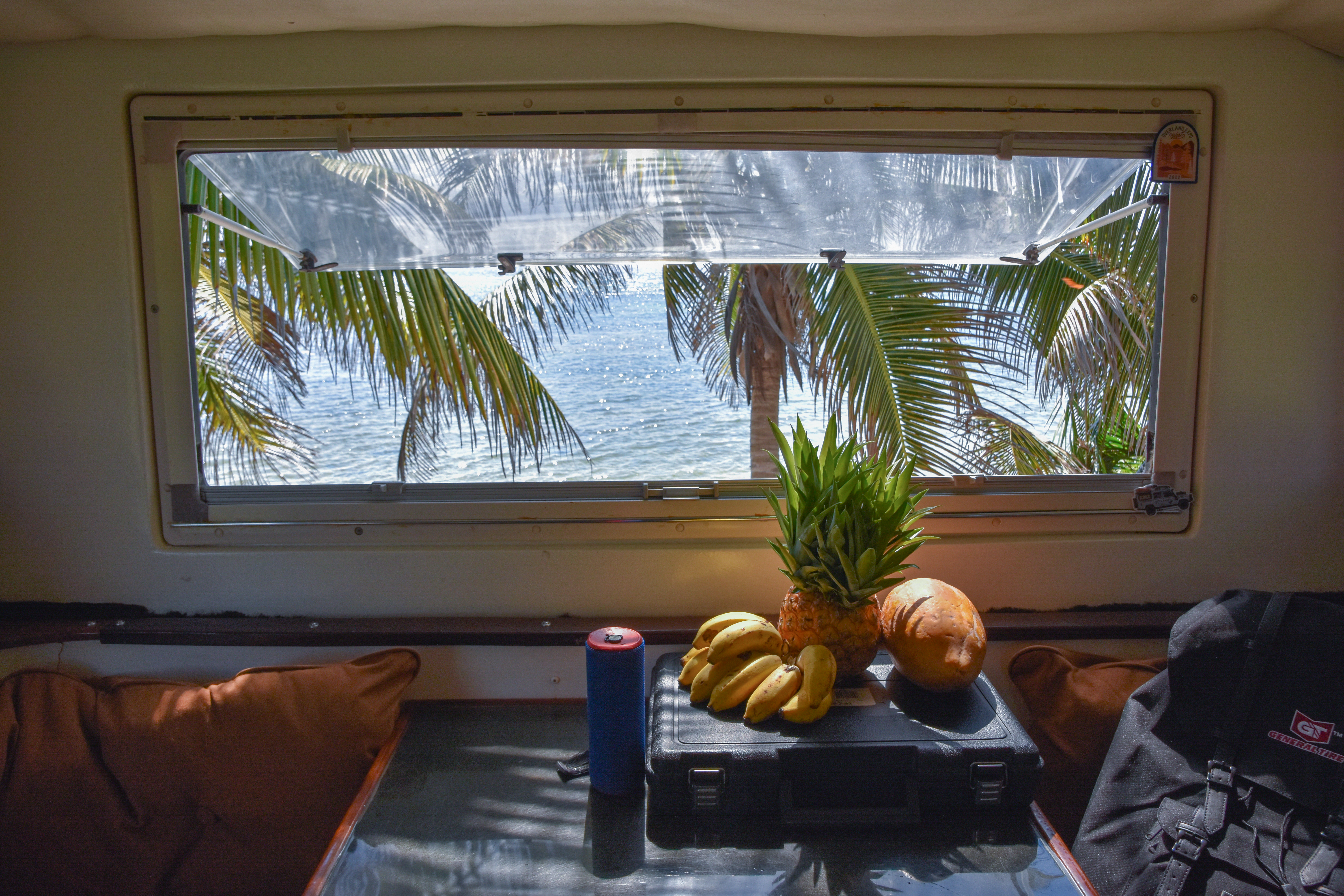
Slowly but surely, all signs of civilization began to recede. We found ourselves driving into the sunset surrounded by white beaches, occasional mangrove swamps, and palm trees blowing in the wind, a storm approaching from the sea. The sky darkened as we bounced along the muddy track looking for a quiet camp along the beach. At a small fork in the trail, I made the decision to head to the beach instead of following the larger track further south. We stumbled upon a level patch beneath palm trees and decided to call it a day after cleaning the area of plastic flotsam, which recent hurricanes had blown onto the beach. We consider it our duty to clean as we go, our way of paying for a peaceful camp.
With the Nimbl parked facing away from the now gusting wind, we listened to Spanish music, ate a large and delicious chicken salad, and went to sleep with the rain pounding the roof of the camper, safe and warm and dry. The new day dawned hot and clear, and we made the decision to explore the trail south for a while; fishermen waded into the shallow water, but aside from their quiet company, we were alone, relaxed, and ready for another day in paradise.
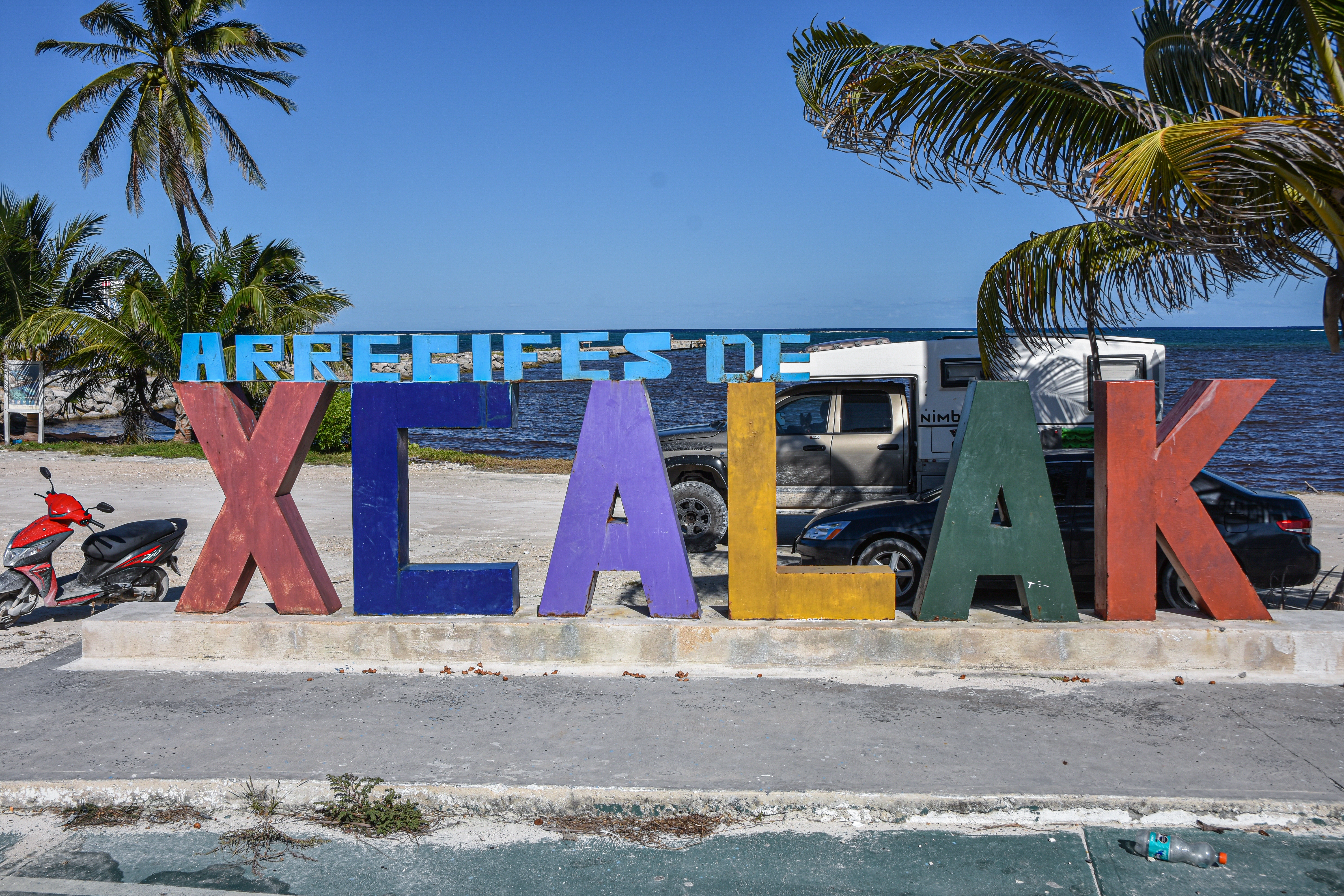
After returning to Tulum, we made our way back to the freeway and cruised South to the town of Mahahual and the trail to Xcalak. Unlike Tulum, Mahahual does not suffer from intense tourism but is instead home to many foreigners who have bought homes along the coast. I searched the town for coal and a good bakery before heading south on the Xcalak trail, which ran along a spit of land down to Belize.

At first, the trail was relatively well maintained, but soon it became apparent that this was not a trail to be attempted with a tall vehicle. This is one of the great advantages of the Nimbl camper as the retracting roof lowers the vehicle significantly; you have the ability to explore tight trails and then camp with all the comfort, space, and luxury of a taller vehicle. Here the mangroves form green tunnels with steep drop-offs on either side; one wrong move and you could find yourself in a muddy bog!
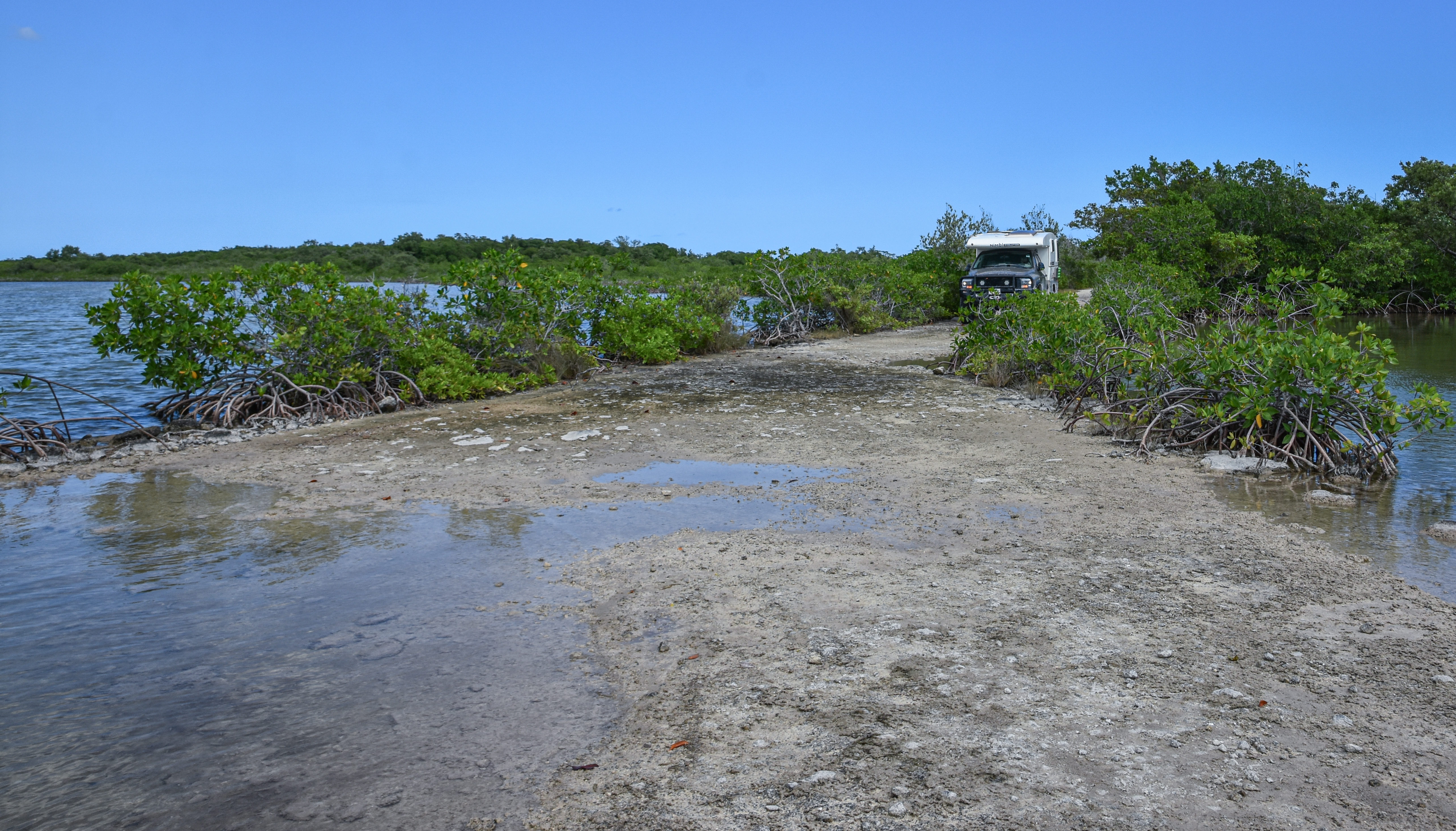
Slowly we made progress, adding pinstripes to the side of the precious vehicle and gathering a collection of leaves and branches as we made slow progress, eventually emerging from a vegetation tunnel into a windswept landscape of blue, creamy whites, and green. There were few tracks here and no other vehicles.
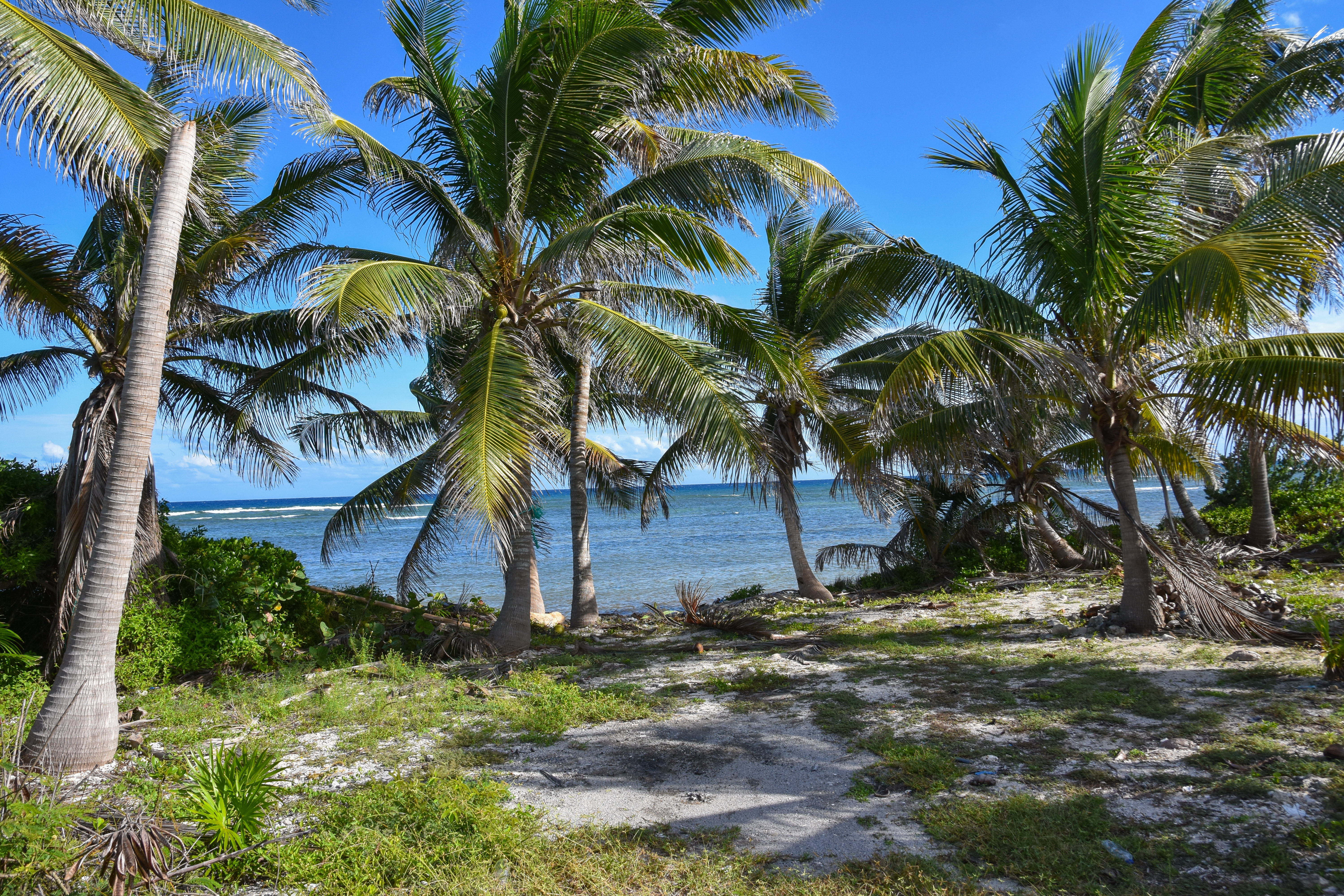
Our camp that night was beside a cove where the water was clear, and the palm trees created a natural windbreak. I cleaned the cove, set up the chairs and table, and prepared a small coconut bonfire and our portable coal (or wood) burning barbecue. Luisa prepared the camper and the Picanha steaks for the grill, made a salad and garlic bread, and joined me for a quiet conversation beneath the stars, the moon glittering upon the Caribbean. Without the children in the vehicle, Luisa and I relaxed, listened to music, joked, and often stopped to take photos; we enjoyed a second adventurous honeymoon. Heaven.
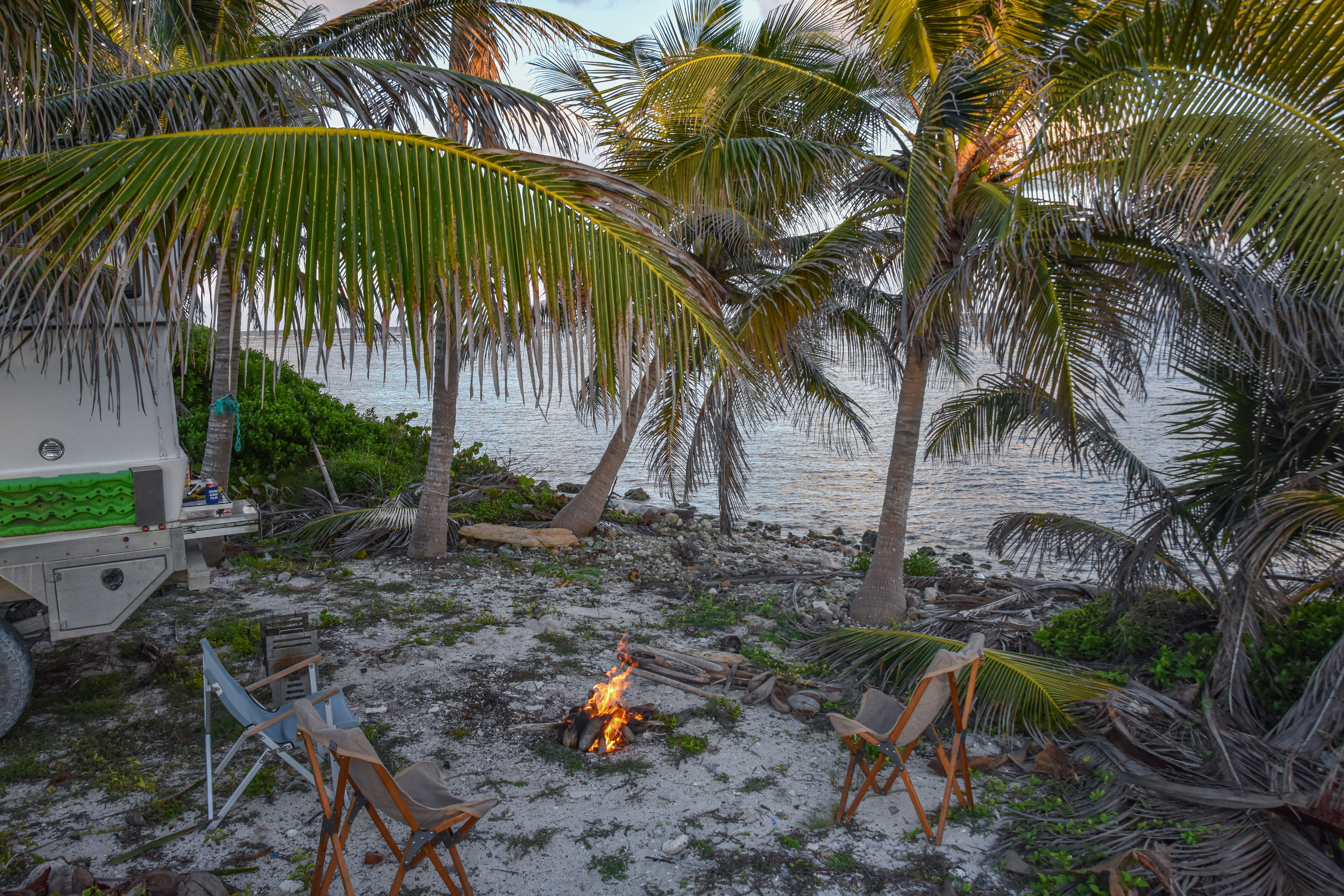
And then the mosquitoes attacked. Mangroves surrounded the clearing where we camped, and word soon spread that the night's bloody meal would be exciting foreign takeaways! Luckily this was not our first rodeo. After beating a retreat to the Nimbl, we emerged wearing insect-repellent clothing and armed with citronella candles and mosquito tennis racket zappers. If there is any sound more satisfying than the crack and sizzle of an electrocuted mosquito, I have yet to hear it. Crack, crack, crack! Word spread of our counter-offensive, and the mozzies changed tactics, retreating to watch us from the shadows like I am Legend's zombies, returning in the morning with reserves. The only escape was the cool water of the Caribbean, and we waded out with our small dog to float in the cool water, flanked by distant fishermen.
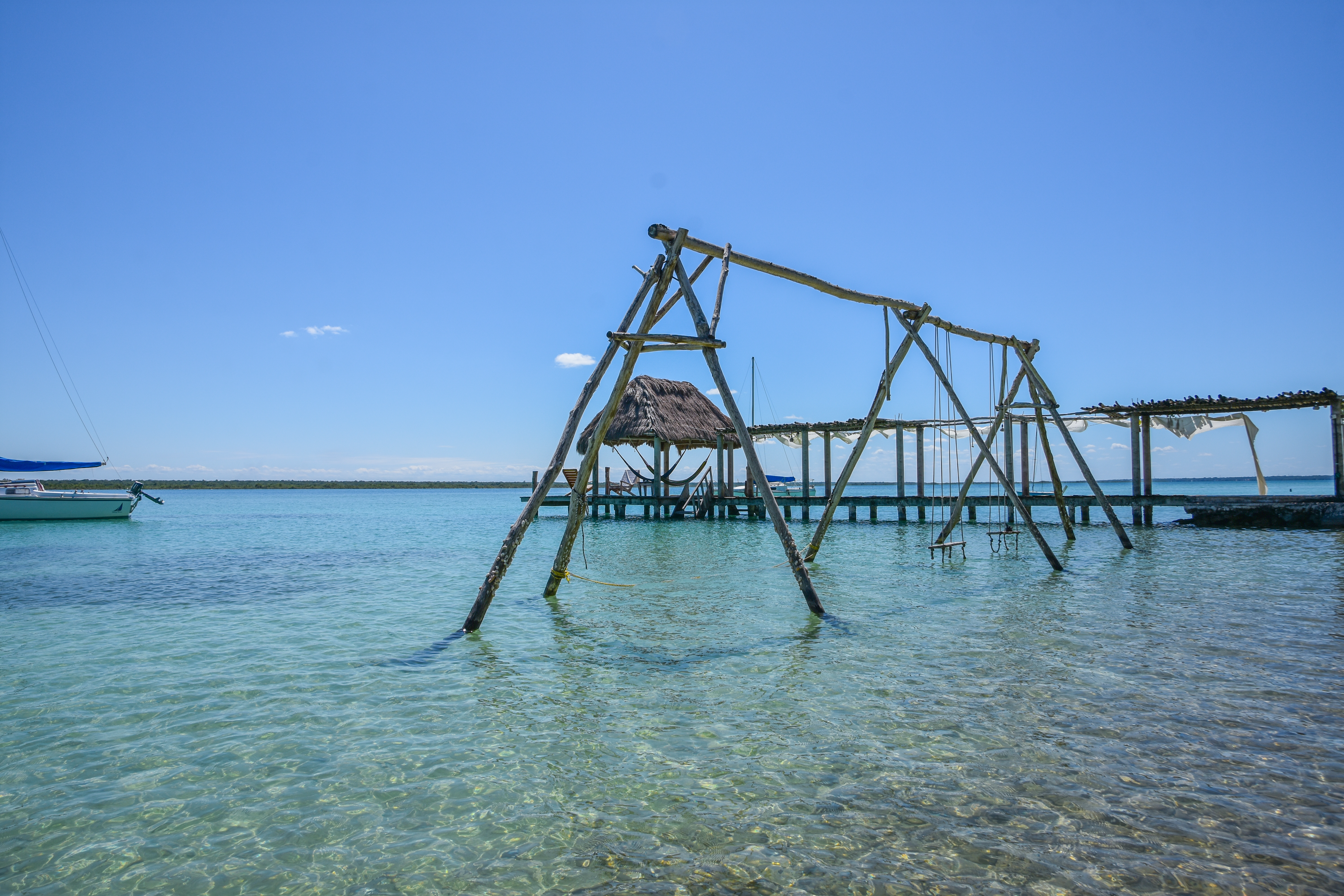
Salty and satisfied, we drove the Nimbl as far south along the Xcalak track as we could, eventually coming to a very narrow section of trail, a few lovely sun-bleached houses, and a small rancho where a slow-talking man informed us that the trail ahead was closed, blocked by large logs and fallen palm trees. Backtracking, we came to a split in the road which we had passed earlier and followed the alternative path to the town of Xcalak, where we sat down at a small restaurant and devoured shrimp tacos and the internet, confirming that the kids were still alive and happy. After another bush-whacking drive, we arrived at the lagoon and decided that we would retreat to Lake Bacalar before exploring further South to Chetumal; the Sargasso red tide had dyed the clear blue water a deep brown. The coastal tracks of Quintana Roo are well worth a visit; it is even possible to rent a Jeep and explore the area. I highly recommend it.
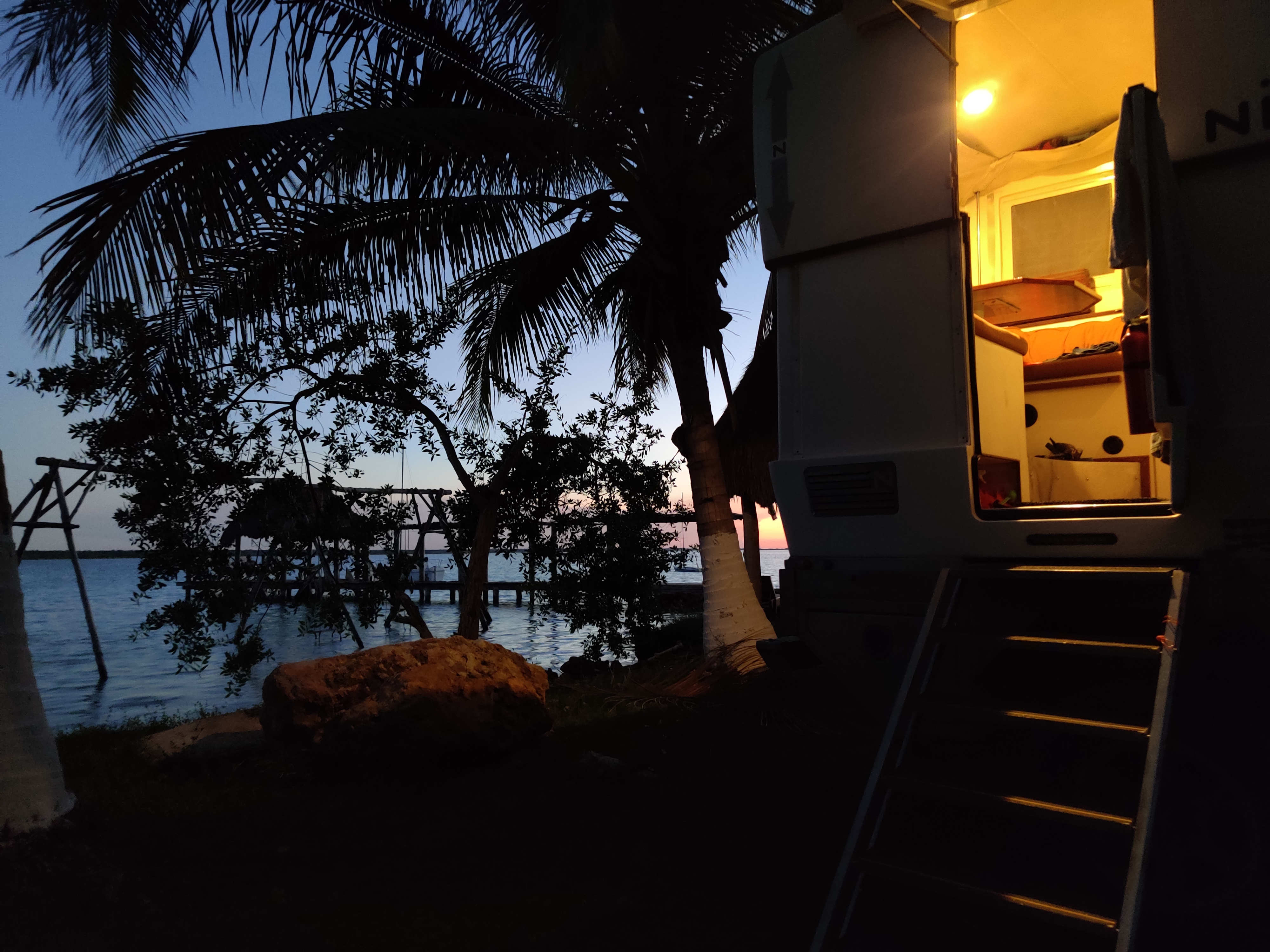
P.S. Yes, we missed the kids like oxygen, but I already have plans to fill the void with a mighty and beautiful dog. More on that later.
Sincerely,
The Resident GT Explorer


